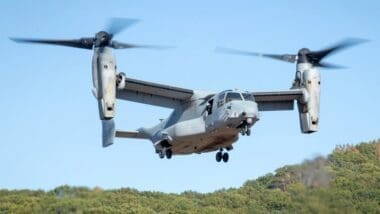The US Navy has lifted an operational halt on its fleet of V-22 Osprey aircraft, a decision that comes in the wake of a recent grounding due to safety concerns. This move allows the aircraft to return to service, contingent upon a series of inspections specified by Naval Air Systems Command (NAVAIR).
The NAVAIR directive mandates that each Osprey undergo a careful examination of its gearbox flight hours before being cleared for flight. Any aircraft with gearboxes exceeding a certain threshold of hours is permitted to fly immediately, while those under the limit are subject to further scrutiny and “risk mitigation controls.” Despite inquiries, NAVAIR has withheld the specific flight hour threshold and the number of Ospreys impacted, citing operational security.
This resumption follows a precautionary pause initiated on December 9 after a US Air Force CV-22 Osprey had to make an emergency landing in New Mexico. Fortunately, the incident did not result in any injuries, but it triggered an investigation into the causes. NAVAIR holds overarching control of the Osprey’s joint operations, enabling them to suspend or restore flight activities based on safety assessments.
The majority of the 360 Ospreys are operated by the Marine Corps, with a smaller contingent managed by the Navy and Air Force Special Operations Command, each operating around 50 of the aircraft. NAVAIR emphasized the crucial role of the V-22 in national defense, stating, “Returning these vital assets to flight is critical to supporting our nation’s interests.”
This halt was reminiscent of a more extensive grounding nearly a year ago, following a tragic CV-22 Osprey crash in Japan, which resulted in the loss of eight airmen. Although the grounding was lifted in March, detailed insights into the failure that led to the November crash have remained scarce despite assurances of the Osprey’s operational safety by officials.
The US Navy’s decision to resume the flights of the V-22 Osprey underscores the aircraft’s strategic importance in defense operations while balancing safety concerns. Continued vigilance and thorough inspections will be crucial in ensuring the safe operation of these aircraft moving forward.












